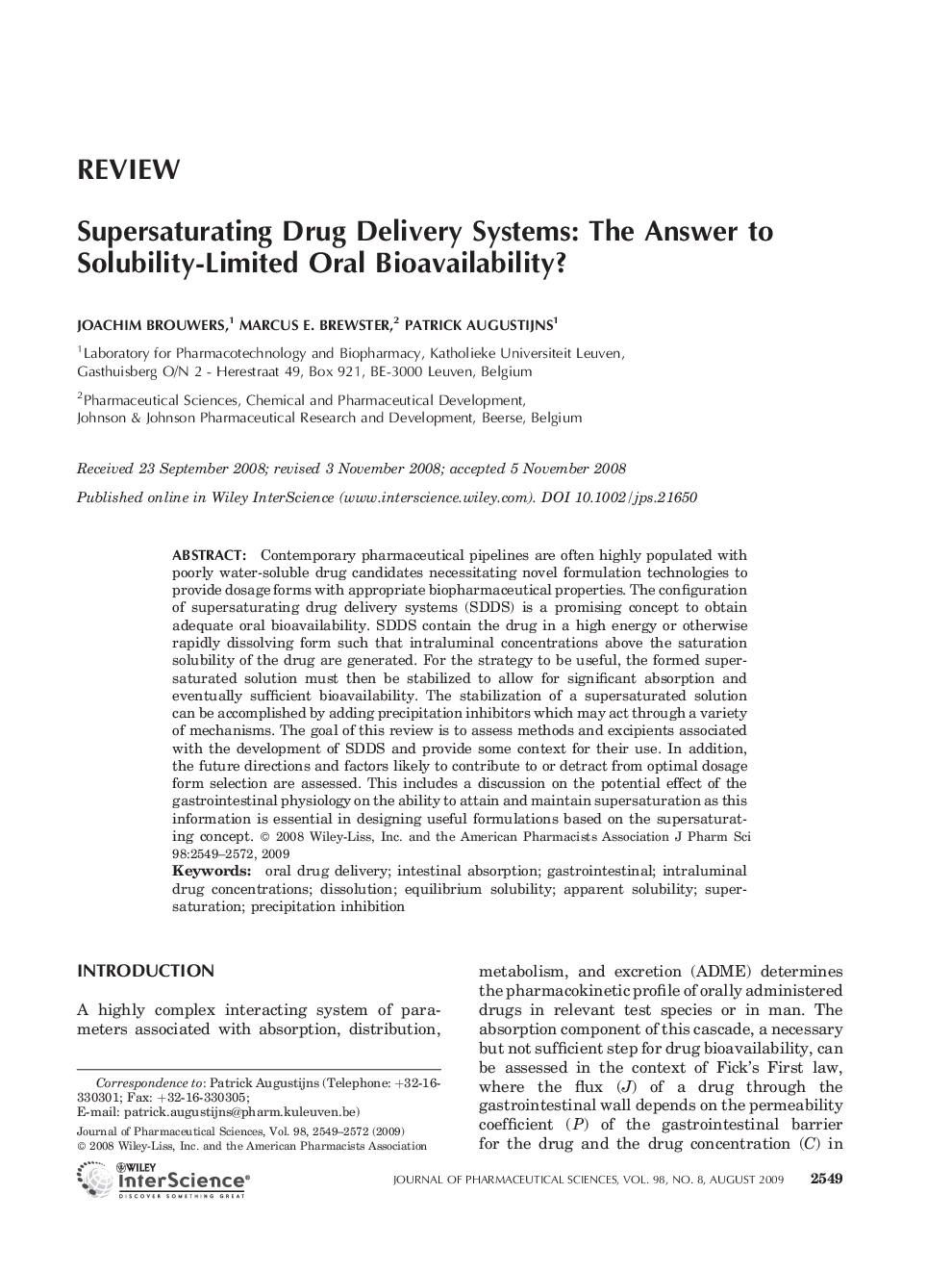| Article ID | Journal | Published Year | Pages | File Type |
|---|---|---|---|---|
| 2486977 | Journal of Pharmaceutical Sciences | 2009 | 24 Pages |
Abstract
: Contemporary pharmaceutical pipelines are often highly populated with poorly water-soluble drug candidates necessitating novel formulation technologies to provide dosage forms with appropriate biopharmaceutical properties. The configuration of supersaturating drug delivery systems (SDDS) is a promising concept to obtain adequate oral bioavailability. SDDS contain the drug in a high energy or otherwise rapidly dissolving form such that intraluminal concentrations above the saturation solubility of the drug are generated. For the strategy to be useful, the formed supersaturated solution must then be stabilized to allow for significant absorption and eventually sufficient bioavailability. The stabilization of a supersaturated solution can be accomplished by adding precipitation inhibitors which may act through a variety of mechanisms. The goal of this review is to assess methods and excipients associated with the development of SDDS and provide some context for their use. In addition, the future directions and factors likely to contribute to or detract from optimal dosage form selection are assessed. This includes a discussion on the potential effect of the gastrointestinal physiology on the ability to attain and maintain supersaturation as this information is essential in designing useful formulations based on the supersaturating concept.
Keywords
Related Topics
Health Sciences
Pharmacology, Toxicology and Pharmaceutical Science
Drug Discovery
Authors
Joachim Brouwers, Marcus E Brewster, Patrick Augustijns,
